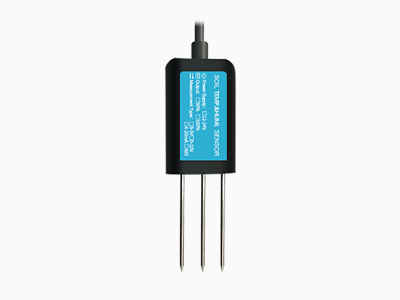learn about wireless soil moisture sensors
With the advent of wireless soil moisture sensors, farmers have a powerful tool to precisely manage irrigation. Optimizing water use is essential for crop health and sustainable agricultural practices. Traditional methods of monitoring soil moisture levels are often time-consuming and inefficient. In this article, we will explore the features and benefits of wireless soil moisture sensors and their impact on agriculture.

The features and benefits of wireless soil moisture sensors
Accurate and Real-Time Data:
Wireless soil moisture sensors provide accurate and real-time data on soil moisture levels. These sensors are placed in the ground at strategic locations throughout the field and measure the moisture content at various depths. The data is then transmitted wirelessly to a central hub or a mobile device, providing farmers with instant access to critical information. This real-time data allows farmers to make informed decisions regarding irrigation scheduling, ensuring that crops receive optimal moisture levels for healthy growth.
Efficient Water Management:
One of the significant advantages of wireless soil moisture sensors is their ability to promote efficient water management. By continuously monitoring soil moisture levels, farmers can accurately determine when and how much water to apply to their crops. This targeted approach minimizes water waste from over-irrigation and prevents water stress from under-irrigation. With precise control over irrigation practices, farmers can optimize both water usage and crop yield, leading to increased efficiency and cost savings.

Customization and Alerts:
Wireless soil moisture sensor offer customization options and alerts to meet specific agricultural needs. Farmers can set desired soil moisture thresholds based on crop types, growth stages, or soil conditions. When moisture levels deviate from the preset thresholds, the sensors trigger alerts, notifying farmers of potential issues. These alerts enable prompt action, allowing farmers to promptly adjust irrigation schedules, identify irrigation system malfunctions, or investigate anomalies that require attention. By addressing problems swiftly, crop health and quality can be preserved, leading to improved productivity.
Ease of Installation and Scalability:
Installing wireless soil moisture sensor is relatively simple and cost-effective. These sensors require minimal wiring or infrastructure, making the setup process quick and hassle-free. Farmers can easily scale their monitoring systems to cover large areas or multiple fields, ensuring comprehensive data collection across their operations. The scalability of wireless soil moisture sensor enables farmers to optimize their irrigation practices at a broader scale, leading to increased productivity and resource efficiency.
Data Analysis and Insights:
Wireless soil moisture sensor generate vast amounts of data over time. However, this data is only valuable when analyzed and transformed into actionable insights. Many sensor systems offer advanced analytics capabilities that help farmers interpret and understand the data collected. These insights provide critical information about water usage trends, irrigation efficiency, and crop performance. Armed with these insights, farmers can make informed decisions, adjust irrigation strategies, and implement precision agriculture techniques to maximize yields and minimize resource use.
Conclusion:
Wireless soil moisture sensors are revolutionizing agriculture by providing accurate and real-time data on soil moisture levels.These sensors offer efficient water management, alarms, ease of installation, scalability, and data analysis. It is a valuable tool in the quest to optimize irrigation practices and promote sustainable agriculture. By utilizing wireless soil moisture sensors, farmers can improve crop health, increase productivity, and protect water resources. Thus, contributing to a more sustainable and resilient agricultural industry.
